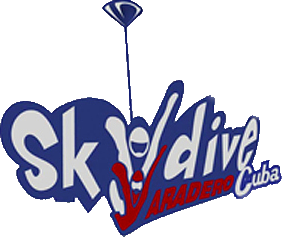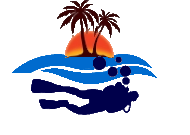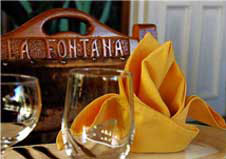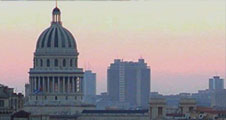Hemingway’s correspondence within the reach of specialists (Part II)
By: Gladys Rodríguez Ferrero | Source: CUBARTE ![]() 28 de July 2009
28 de July 2009
(Cubarte).- Hemingway wrote in his bathroom´s walls. I agreed with some criteria given by Congressman, James P. McGovern, to the US press, who considered the writer´s home a historical documentary heritage.
His house, like the documents it preserves, are an excellent source of knowledge.
Then, how would be possible to think that Hemingway´s documents could be preserved, but not his house?
This doesn´t have any sense at all; but it just happened, and we started to work on this the way we´re accostumed to work in Cuba: with an enormous will and so much patience; but also having the affability of the US colleagues, who shared with our technicians their worries and knowledge, exchanging criteria and common decisions regarding the preservation of the writer´s collections, among which were: control of the environment, and management of the sunlight levels, etc.
Although the original agreement included the work-in-teams; little by little, we could realize that also Hemingway was somewhat affected by the US blockade against Cuba.
Naturally, he had declared himself as “the first every-day Cuban being awarded with the Nobel Prize”; so he couldn´t be exempted from such an abominable method.
Let us have a look at the concept of Digital Heritage provided by UNESCO (the United Nations Organization for Educational, Scientific and Cultural issues), in 2003, that defines it as:
“Unique resources that are the result of the human beings´ knowledge or expression, be cultural, educational, scientific or administrative; resources of juridic and medical nature, and of technical information, and others brought to digital format from the analogical material we kept. These could be texts, databases, fixed or moving pictures, sound recordings, graphics, softwares or Web Pages, and many other possible formats with a wide repertoire of an increasing diversity.”
This definition made us realized about the importance of the decision taken, and also about the risks we ran at the moment we decided to preserve this heritage memory transferred to digital support, and how this reality had to be faced from this time on.
Once we finished with this preservation or restoration stage, and with the reprography (which includes digitalization and microfilm), we passed to the selection of those documents, whose copies could be reached by all.
To carry out this part, we signed a new agreement, this time, between the National Council of Cultural Heritage and the John F. Kennedy´s Library and Presidential Museum. This took place in the year 2005.
The agreement was signed by Ph.D. Stanley Katz, a representative from the John F. Kennedy´s Library and Museum, and also by Ph.D. Marta Arjona, President of the National Council of Cultural Heritage.
Our reader may wonder how and how much skillful we had to be all these years to make possible, not only the digital access to Hemingway´s documents by the specialists, but also the preservation of the originals.
To make you understand this complex and multidisciplinary work, we will be explaining how CENCREM (National Center for Preservation and Museology of Cuba) did this work of high professional complexity.
The Hemingway´s collection at the Ernest Hemingway´s Museum of Cuba contained letters, telegrams, aerogrammes, invitation letters and notes from different parts of the world, which were sent to this writer by different personalities of the cultural sphere, among whom were poets and prestigious movie and dramatic actors and actresses like Marlene Dietrich, Ingrid Bergman, Martin Carol, etc.; as well as by publicists and editors writing for important magazines and newspapers, such as William B. Edwards, from the Guns Magazine, and other editors from the Life magazine; besides bullfighters, friends, hunter´s clubs, and -of course-, a long list of the writer´s admirers.
Up to the end of 2007, over three-thousand pages of documents were restored and near three-thousand digitalized -that is, transferred to digital format.
Now, it is necessary to clarify that, from the work we have done, we will make reference, each time we mention a figure, to the pages of different documents.
For instance, one letter may contain seven, ten or fourteen pages, but the letter is, per se, a document.
However, when we restore this letter or transfer it to digital format, we must know that each of these works is done page by page, thus, finishing our work with the document; although this document may have fourteen pages.
Then, we may say that we have restored or digitalized fourteen pages of documents, but we had only finished one document.
What were the main difficulties these documents had?
The collection was kept in acid archives, placed in vertical position, or by alphabetical order, with the purpose of making its search easier.
The acidity was mostly found in the paper collection. Other documents were oxidized since they were binded with JEM paper clips.
Taking into account the quality of the paper, and in spite of his owner´s care, many of these documents were seriously damaged.
The paper preservation specialists of CENCREM made a first exhaustive analysis out of them, and provided an initial proposal on how to deal with each particular document belonging to the Letters Collection.
This work was carried out by Cuban and US specialists, and took place at the documents´ storage room of the “Ernest Hemingway” Museum.
These first preservation and restoration proposals were hand-written on each document by means of a pencil, and were then inserted between those documents considered to be of museum value, estimating the degree of conservation of the paper through a visual examination.
What preservation and restoration procedures were used to accomplish this work?
As we explained to you above, the papers collection contained hand-written and typed documents; but both were signed by their senders.
In the letters´ envelopes usually appeared the senders´ addresses hand-written.
In these cases, it was necessary to carry out some proofs -to know if the document could be washed or not- with the purpose of determining the solubility levels of the inks that were used.
Once this process was over, we then determined if we could employ or not the water treatment.
If the ink used in the document was soluble, we should implement another method based on the bookeeper, which is a chemical procedure, especially prepared to avoid ink displacement.
Those documents being submitted to the water treatment were introduced into a cuvette containing a demineralized water solution plus calcium hydroxide (Ca(OH)2, with a pH ranging between 7 and 8,5. In this way, we could achieve the neutralization and extraction of the paper´s soluble acids, as long as the supporting paper and the inks allowed us to do that. This way, the documents were being deacidified.
After finishing with the water treatment, we continued with the documents drying process.
To do this, we placed the documents on a table, so they appeared between polyester paper sheets (called reemay), then, put some blotting paper and, above this, sheepskin fleece.
The documents, placed like a sandwich, remained slightly pressed between acrylic plates. This way we were able to eliminate kinks and support twists, to accomplish a better extended state at the end of the process, through the use of foldings.
Another procedure we used was the mechanical cleaning of the documents, the elimination of the oxyde that the metal clips left on the paper -which, by the way, was very difficult for us to achieve in many cases.
Besides this, we had to eliminate the tape sticked to some of the documents.
Those documents with damaged edges were strengthened, as well as those areas of the document´s support which had been damaged and blent. Those parts that were seriously damaged or lost, due to the oxydation of the metal clips, were also strengthened with band boosters.
Likewise, we also repaired the parts that were torn, as well as the areas where the support was lost (missing parts of the document).
On the other hand, we kept the form in which the envelopes with letter openers were torn, and reinforced the partial detachments of the papers´ support.
The postage stamps were attached in the original place of the envelopes with methyl cellulose.
It has been a long and complex road, but when you´re blessed by the success, the difficulties don´t matter, neither the complexity of the methods and procedures used in one or another document.
The most important thing in this exciting work is the final result obtained by the specialists and technicians working at CENCREM.
We tried, by all means, to avoid losing this Heritage Documentation, but, at the same time, we worked hard to preserve the memory.
That´s why, we decided to transfer these documents to digital support. To do that, we used some optical devices such as the DVD and, later on, we then transferred the images, in the US. to microfilm.
Our goal was not only to achieve the preservation of Hemingway´s collection, but also provide the specialists from different parts of the world access to these documents.
The specialists from the Ernest Hemingway´s Museum of Cuba and from the John F. Kennedy´s Library and Presidential Museum of the US could have access to these documents through the microfilm technique.
Translation: Roxana Marquez Herrera (Cubarte)























